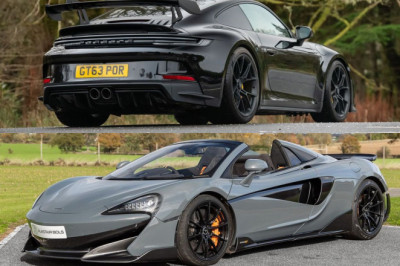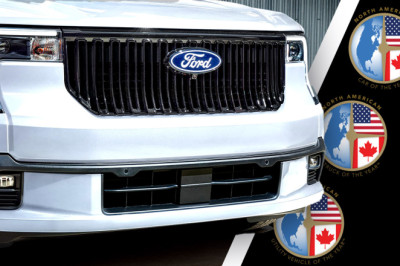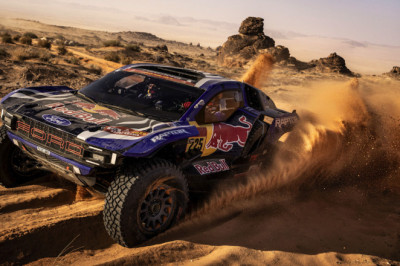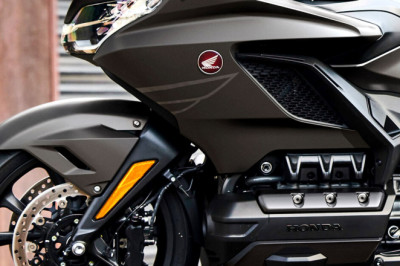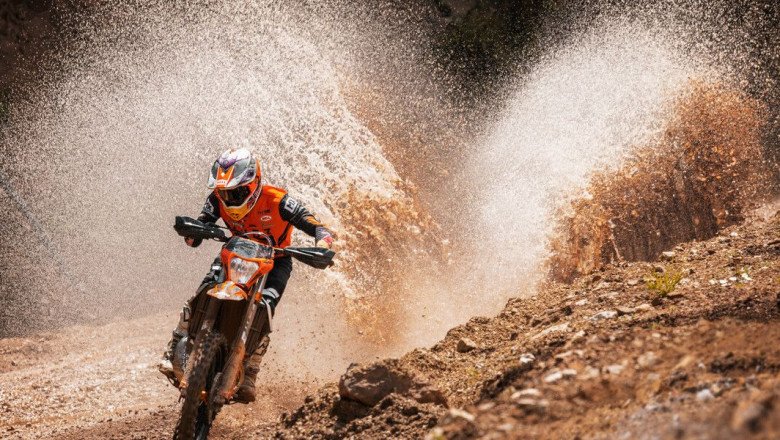
Two-stroke engines were once a ubiquitous presence in dirt bike racing, renowned for their lightweight construction and impressive horsepower. These engines, when fitted into a dirt bike frame, offered exceptional agility in corners and exhilarating speed when the throttle was wide open. For decades, manufacturers continued refining the same formula until Yamaha introduced its groundbreaking YZ400F four-stroke dirt bike, which effortlessly clinched victory in its debut race at the 1997 Las Vegas Supercross. This milestone marked the beginning of a paradigm shift, ultimately leading to the decline of two-stroke engines in professional racing.
Following Yamaha's triumph, other manufacturers were compelled to follow suit, investing in the development of their own four-stroke models. Yamaha's innovative motocrosser was a direct response to California's increasingly stringent environmental regulations, which traditional two-stroke engines could never comply with. However, the advantages of four-stroke engines extended beyond their cleaner emissions. These new bikes delivered more usable power and torque, particularly at lower rev ranges, making them more user-friendly and forgiving for riders. As brands scrambled to embrace this transformative technology, progress in two-stroke engine development stagnated. Fortunately, the forward-thinking engineering team at KTM sought to inject new life into these beloved, old-school motors through the integration of fuel injection.
KTM's new range of fuel-injected two-stroke engines represents a revitalization of the technology, offering enhanced rideability, improved maintenance accessibility, and greater environmental friendliness. Traditional two-stroke engines are notorious for their higher levels of pollution compared to their four-stroke counterparts, mainly due to the inefficiencies of carburetors and the combustion of oil within the cylinder head. Two-stroke engines rely on a mixture of oil and gas to maintain proper lubrication. Fortunately, the integration of fuel injection in these new bikes addresses many of these inefficiencies, resulting in cleaner-running engines compared to their carbureted predecessors. This advancement not only reduces emissions but also lowers fuel consumption while significantly widening the traditionally narrow powerband associated with two-stroke engines.
The introduction of fuel-injected two-stroke engines has sparked a resurgence of interest in these classic motors. By combining the inherent advantages of two-stroke engines, such as their lightweight design and high power-to-weight ratio, with the benefits of fuel injection technology, manufacturers are creating bikes that are easier to ride, simpler to maintain, and more environmentally conscious. The return of two-stroke engines with modern advancements showcases the enduring appeal and adaptability of these iconic powerplants in the ever-evolving world of dirt bike racing.
The Evolution of Fuel Injection in Two-Stroke Engines: Improving Performance and Rideability

Modern two-stroke engines, particularly those developed by KTM, have undergone a significant transformation in their fuel injection technology. While not identical to the fuel injection systems found in cars, these advancements have revolutionized the performance and capabilities of two-stroke dirt bikes.
Direct injection, commonly used in car engines, involves injecting fuel directly into the combustion chamber. KTM explored the possibility of incorporating direct injection into their bikes in 2015 but found the technology to be overly complex for off-road applications. The high thermal stress on engine components like pistons and conrods, coupled with the challenges of preparing the air-fuel mixture, deemed direct injection impractical for motocross bikes. KTM determined that direct-injected bikes would be heavier, less efficient, and considerably more expensive than the system they ultimately chose.
Instead, KTM pursued Transfer-Port Injection (TPI) for their 2018 enduro bike lineup. Through continuous refinement, this technology has evolved into the more recent Throttle-Body Injection (TBI) system found in the 2023 model-year bikes. TPI and TBI involve the use of fuel injectors, either within the transfer port or the throttle body, to deliver fuel to the engine. KTM claims that the new TBI design allows for a more homogenous air-fuel mixture, resulting in improved combustion.
In contrast, carburetors rely on the vacuum generated by the engine's intake stroke to draw in air and simultaneously introduce fuel into the combustion chamber. Fuel flows through tiny passages called jets, which control the amount of gas entering the chamber. Tuning carburetors to achieve optimal performance is a time-consuming task that requires expertise and experience.
The introduction of fuel injection, whether TPI or TBI, brings continuous variable adjustment of the air-fuel ratio, ensuring a near-perfect mixture at all times. An onboard engine management system controls the fuel injection process automatically. This advancement yields several benefits, including more usable power, higher fuel efficiency, and a closer resemblance to the ride characteristics of four-stroke engines when opening the throttle.
The benefits of fuel-injected two-strokes extend beyond performance. These engines run reliably and consistently, reducing the need for constant carburetor adjustments. This advantage is particularly crucial for professional racers like Taylor Robert, who can focus on riding rather than tinkering with their bikes. Fuel injection also proves advantageous in challenging racing conditions, such as races with varying elevations. Fuel-injected two-strokes can maintain optimal performance regardless of altitude, while carbureted bikes would require significant re-tuning.
KTM's fuel-injected two-strokes have gained praise for delivering power in the low RPM range, providing traction and control for hard enduro riding. The TPI bikes initially had a flatter power curve but were sufficient for the demands of hard enduro racing. However, the introduction of TBI bikes has resolved the previous top-end performance limitations. These bikes offer linear power delivery while ensuring a significant boost in top-end power. This improvement caters to motocross riders who require higher speeds and extended periods of wide-open throttle.
While the future impact of fuel-injected two-strokes remains uncertain, KTM continues to invest in the development of these engines. Many riders, both casual and professional, still appreciate the nostalgic feel and distinctive sound of two-stroke engines. KTM's commitment to refining this technology is evident, as showcased by Manuel Lettenbichler's victory in the 2022 FIM Hard Enduro World Championship on a fuel-injected two-stroke bike. As long as there is sufficient demand from buyers, KTM intends to further advance these bikes, ensuring that old-school charm and modern performance can coexist in the world of dirt bike racing.
Advantages of Fuel-Injected Two-Stroke Engines: Enhanced Performance and Riding Experience
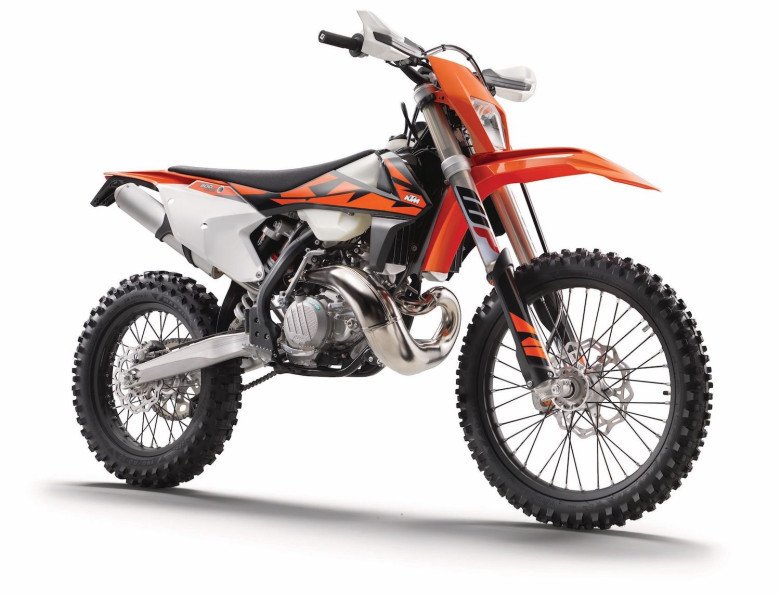
The transition from carbureted two-stroke engines to fuel-injected two-strokes has significantly improved the riding experience and performance of these bikes. While carburetors allow some adjustment of the air-fuel ratio, they require more manual tuning and are generally set-and-forget devices. In contrast, fuel injection, such as throttle-body injection (TBI) used in KTM's two-strokes, offers continuous variable adjustment of the air-fuel mixture. An onboard engine management system ensures a near-perfect ratio at all times, resulting in improved power, fuel efficiency, and overall performance.
The benefits of fuel injection are particularly noticeable in two-stroke engines, which are more sensitive to changes in the air-fuel ratio. This technology has simplified bike maintenance for professional racers like Taylor Robert, who no longer need to spend excessive time tinkering with carburetors. Fuel-injected two-strokes provide reliable performance out of the box, allowing riders to focus on their racing without the added stress of carburetor adjustments.
Furthermore, fuel-injected two-strokes excel at different elevations, maintaining optimal performance throughout the race course. This is in contrast to carbureted bikes, which require significant re-tuning to adapt to changing altitudes. The engine management system in fuel-injected two-strokes continuously adjusts the air-fuel ratio, ensuring consistent power delivery regardless of the elevation.
In terms of power characteristics, early Transfer-Port Injection (TPI) two-strokes had a flatter power curve and lacked top-end performance. While this was suitable for hard enduro riding, it posed challenges for motocross, which requires sustained high speeds. However, the introduction of throttle-body-injection (TBI) bikes addressed this issue, providing a linear power delivery while also improving top-end performance. TBI bikes offer more power at wide-open throttle, enhancing acceleration and performance during fast straightaways and race starts.
It is important to note that the advancements in fuel-injected two-strokes have not necessarily made the sport easier. Instead, they have raised the level of competition and performance. Riders like Taylor Robert attest to the benefits of fuel-injected two-strokes, which offer improved power delivery, reduced maintenance, and elevated riding experiences in both hard enduro and motocross disciplines.
Fuel-injected two-strokes also pay big dividends for hard enduro riders like Robert in races such as Red Bull’s Sea to Sky event, which starts on the beach at sea level and ends on a mountain at nearly 9,000 feet. “The cool thing about fuel injection is that the bike runs well the whole time no matter where you are on the course,” says Robert; just like us humans, an engine at elevation needs much more air to continue running properly. While this would require a complete re-tune, KTM’s fuel-injected two-strokes have an engine management system that can continuously maintain a nearly perfect air-fuel ratio. “I’ve done that race on a carbureted bike, which was barely running by the time I got to the top,” says Robert.
It’s unclear whether this technology will trigger a two-stroke revival, but KTM remains committed to teaching these old dogs new tricks. And that’s not entirely surprising, as quite a few casual riders and even professional racers still prefer the old-school feel and sound of these engines. This is especially evident in enduro racing, where KTM’s own Manuel Lettenbichler won the 2022 FIM Hard Enduro World Championship on a fuel-injected two-stroke. At the end of the day, the Austrian manufacturer says it will keep developing these bikes as long as there is sufficient demand from buyers.
10 Questions and Answers About Fuel-Injected Two-Stroke Engines
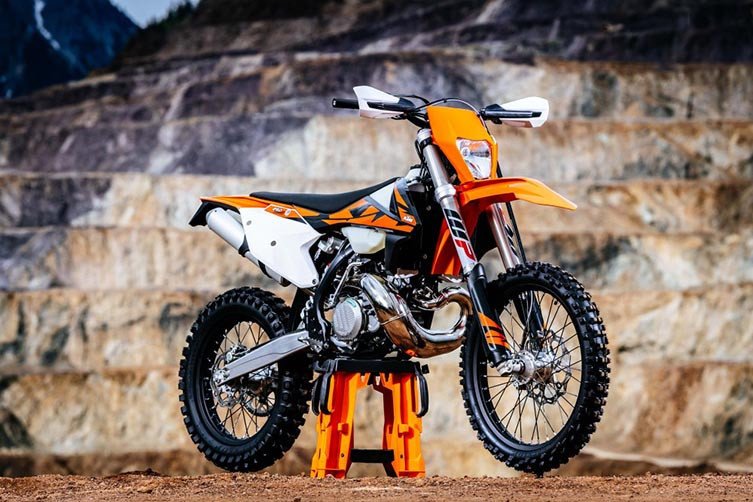
-
What are fuel-injected two-stroke engines?
Fuel-injected two-stroke engines are a type of engine that use fuel injection technology, specifically throttle-body injection (TBI), to deliver fuel directly into the combustion chamber. This technology replaces the traditional carburetor found in older two-stroke engines.
-
What are the advantages of fuel-injected two-stroke engines over carbureted versions?
Fuel-injected two-stroke engines offer several advantages, including improved fuel efficiency, more usable power, higher performance, and a near-perfect air-fuel ratio at all times. They also eliminate the need for constant carburetor tuning and provide a smoother and more consistent riding experience.
-
Why did manufacturers switch to fuel injection for two-stroke engines?
Manufacturers switched to fuel injection for two-stroke engines primarily to comply with environmental regulations and to enhance the overall performance and efficiency of the engines. Fuel injection allows for cleaner combustion and better control over the air-fuel mixture.
-
How does fuel injection improve the performance of two-stroke engines?
Fuel injection improves the performance of two-stroke engines by providing a more precise and consistent fuel delivery, resulting in improved power delivery, better low-end torque, and enhanced throttle response. It also eliminates the power loss often associated with carburetor tuning.
-
Are fuel-injected two-stroke engines more environmentally friendly?
Yes, fuel-injected two-stroke engines are generally more environmentally friendly compared to their carbureted counterparts. The improved combustion efficiency and control over the air-fuel ratio help reduce emissions and minimize pollution.
-
Do fuel-injected two-stroke engines require less maintenance?
Yes, fuel-injected two-stroke engines typically require less maintenance compared to carbureted engines. With fuel injection, there is no need for frequent carburetor adjustments, and the engine management system ensures optimal performance without manual tuning.
-
Can fuel-injected two-stroke engines adjust to different elevations?
Yes, fuel-injected two-stroke engines can adjust to different elevations without the need for manual re-tuning. The engine management system continuously maintains a near-perfect air-fuel ratio, ensuring proper performance regardless of the altitude.
-
Do fuel-injected two-stroke engines make riding easier?
Fuel-injected two-stroke engines can make riding easier, especially for professional racers and enthusiasts. The improved power delivery, smoother throttle response, and consistent performance allow riders to focus more on riding and less on carburetor adjustments or tuning.
-
What is the difference between Transfer-Port Injection (TPI) and Throttle-Body Injection (TBI) in fuel-injected two-stroke engines?
TPI (Transfer-Port Injection) and TBI (Throttle-Body Injection) are two different fuel injection systems used in fuel-injected two-stroke engines. TPI injects fuel into the transfer port between the crankcase and the cylinder, while TBI injects fuel directly into the throttle body. TBI offers improved air-fuel mixture homogeneity and enhanced combustion.
-
Are fuel-injected two-stroke engines likely to lead to a two-stroke revival?
While it is uncertain if fuel-injected two-stroke engines will trigger a full-fledged two-stroke revival, they have garnered attention and popularity among riders who appreciate the old-school feel and sound of these engines. As long as there is sufficient demand, manufacturers like KTM are committed to further developing fuel-injected two-stroke bikes.









